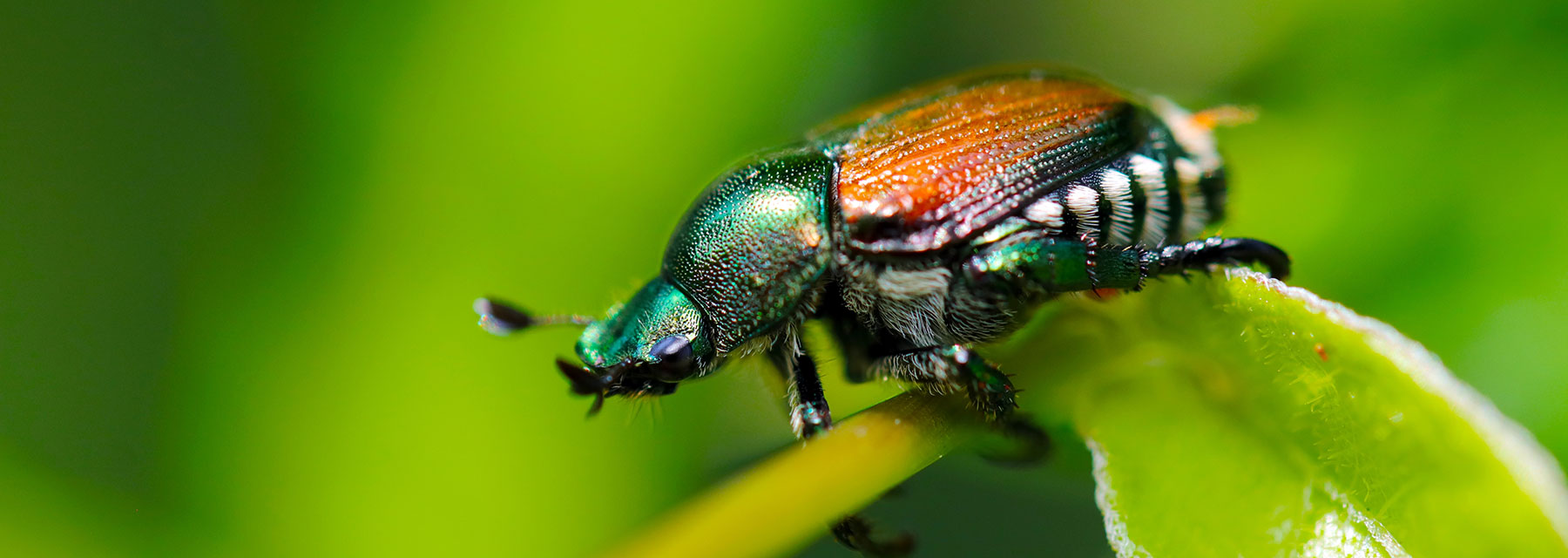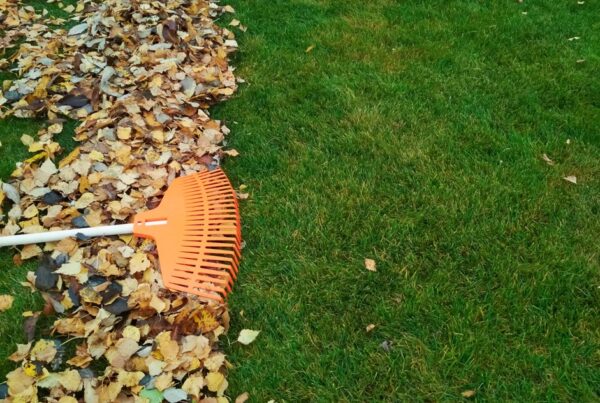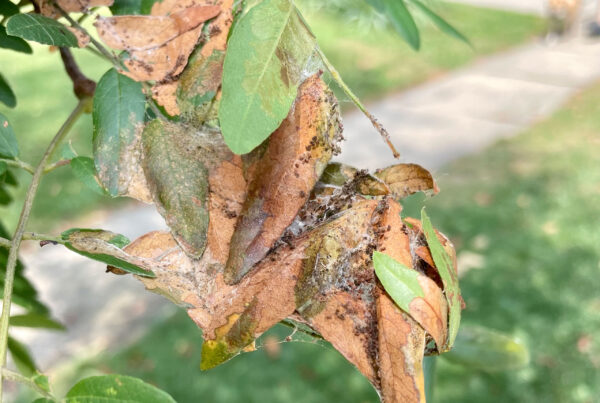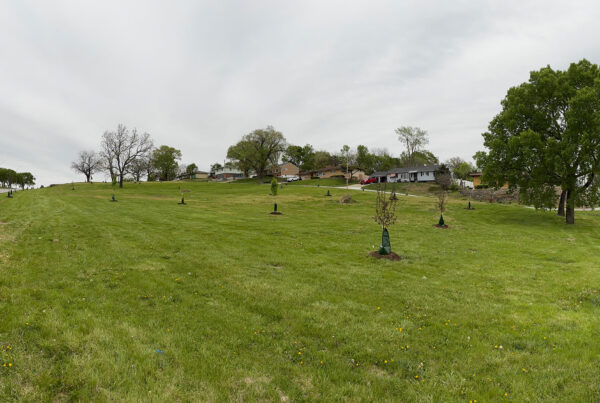Every year, typically in June, adult Japanese beetles (Papillia japonica) begin to emerge across our region. During this time, you’ll likely notice significant feeding damage from these pesky beetles. We field a lot of questions and concerns about the Japanese Beetle each year, so we thought we’d write up a little post providing more information on this pest.
Life Cycle
Japanese beetles have an annual life cycle. Eggs are laid in moist sod near the soil surface in July and August. Shortly after, the eggs hatch, and the larvae burrow underground. Japanese beetles spend most of their lives as a large, white “C” shaped grub approximately 1.25 inches in size. Grubs remain in the soil over winter, and the next generation of adults emerge beginning in June the following year. Adults emerge over several weeks across the summer with peak emergence during mid July. Populations are highly variable from place to place and across years. Infestations may be heavy one year but not the next – or one block/neighborhood but not the next.

By Joe Wheelock. Joe is a Heartland Tree Alliance Program Manager.
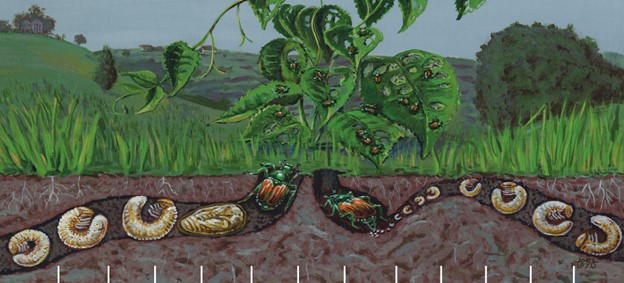
Figure 1: Japanese Beetle life cycle: By Joel Floyd – USDA APHIS (Animal and Plant Health Inspection Service) publication
Damage
Japanese beetles are considered one of the worst landscape pests in the U.S. as they can cause damage in both their larval and adult life stages. As larvae, Japanese beetles will feed on the roots of trees, shrubs, and turfgrass; as adults they feed on the flowers, fruit, and foliage (leaves) of more than 300 different types of plants. Linden trees are one of their favorites, and it’s not uncommon to see dozens of adult beetles devouring a single plant at a time. Foliage is characteristically consumed by eating the tissue between the veins of the leaves; this is known as skeletonization. Plants will often turn brown and look dead due to heavy feeding by adult beetles. This may sound bleak, but don’t worry! While heavy feeding and defoliation of otherwise healthy trees may cause them to look terrible, this will not kill the tree. Trees will be stressed but often recover just fine the following spring.
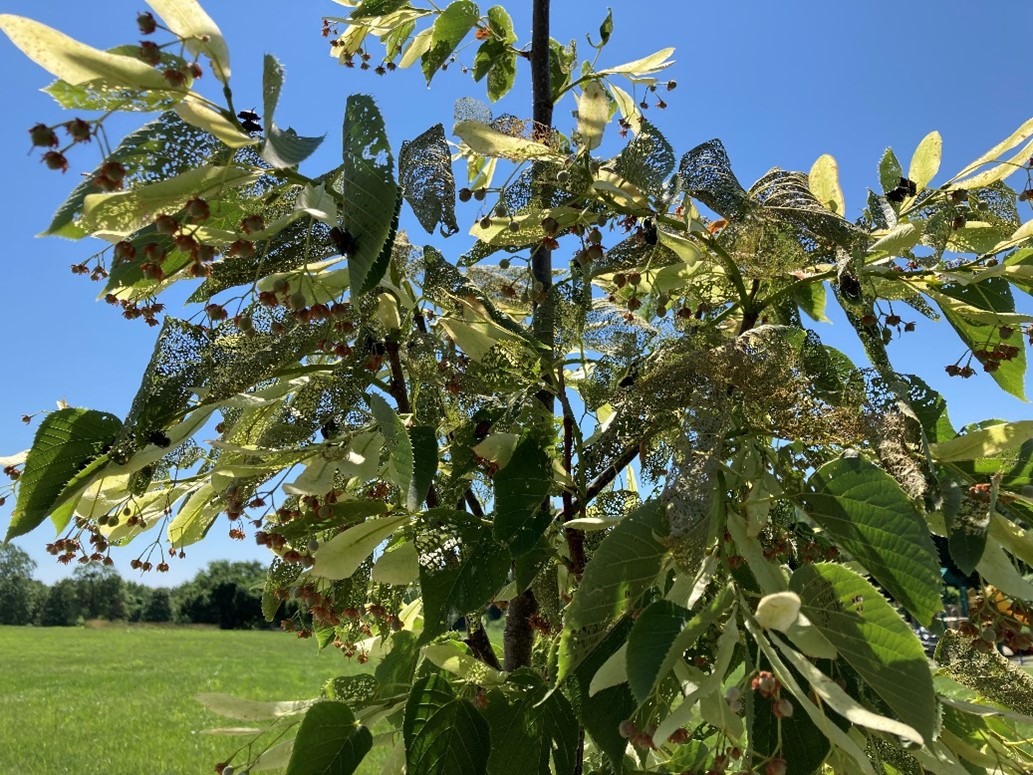
Figure 2: Defoliation by Japanese beetle on a young linden tree
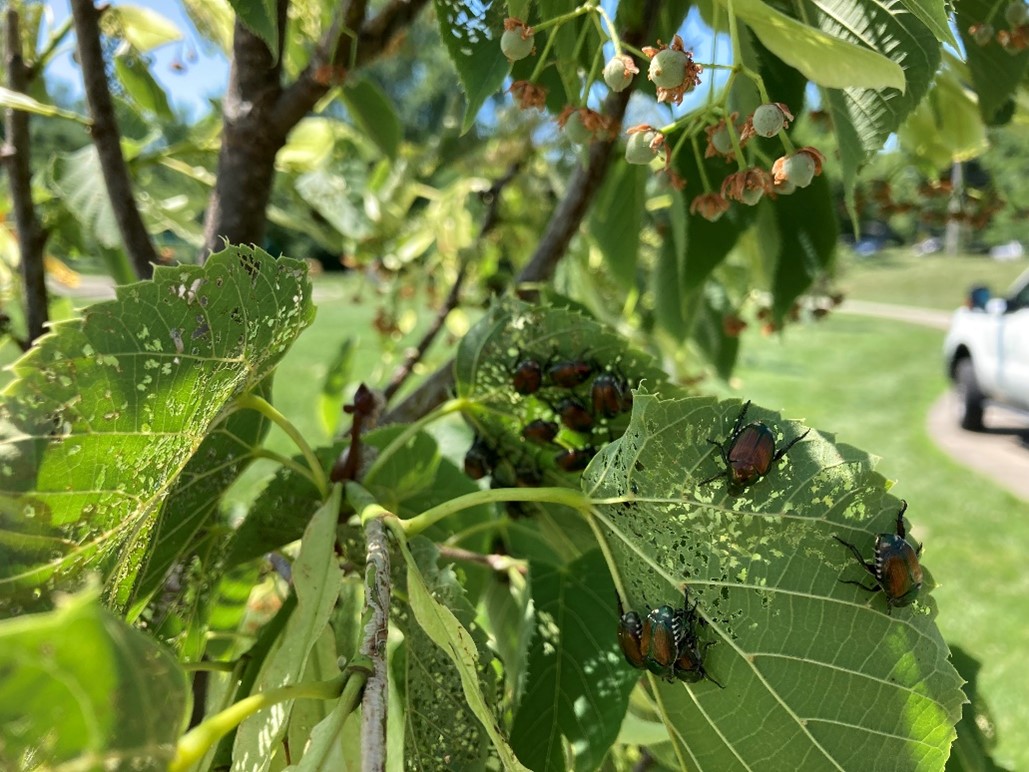
Figure 3: close-up of a leaf showing the skeletonization of a leaf by Japanese beetles.
Control of Japanese beetles is difficult! Both adults and larvae cause damage and since adults can fly up to 15 miles in search of food, controlling one life stage does not prevent problems with the other. If you cannot tolerate the cosmetic damage caused by Japanese beetles then you should explore creating an IPM plan for their management.
IPM stands for “integrated pest management.” IPM is a more holistic, ecosystem-based, strategy that focuses on long-term prevention of pests or their damage through a combination of techniques that minimize risks to human health, beneficial insects (like bees!) and other non-target organisms, and the environment. Pesticides are used only as a last resort after monitoring indicates they are needed and applied according to established guidelines. A good IPM program uses biological, cultural, mechanical, and chemical controls to keep pest populations below levels that cause injury. Because tolerance for damage varies among individuals, strategies will change and no program will look the exact same.
Below we present some options for control and resources for more information.
Plant Selection:
Choose plant varieties that are more resistant to feeding damage. While adults are known to feed on 300+ varieties of plants, some are more susceptible to damage from the beetle including: Roses, Grapes, Linden, Sassafras, Norway Maple, and Japanese Maple. However some varieties are more resistant, such as Sterling Silver Linden or Northern Red Oak (See https://entomology.ca.uky.edu/ef451 for more information).
Physical Removal and Exclusion:
For small plants it may be practical to remove adult beetles by hand, especially if populations are small. Simply shake beetles into a bucket of soapy water early in the morning when temperatures are cooler and beetles are less active. Highly valuable plants can be covered with netting or cheesecloth to protect them from feeding damage during peak feeding activity. However, these strategies are impractical if the plant is too large (like a tree) or you are trying to protect a large area.
Chemical Control:
There are many products labeled for use on Japanese beetles. Remember to always read and follow the label when using a pesticide – the label is the law! If you’d like to explore chemical control options, we suggest reaching out to your local extension agent to learn more about your options and timing. Using grub killer will not protect plants in your landscape from adult feeding; similarly spraying for adults will not protect your turf from grub damage later in the season.
Japanese Beetle Traps:
You’ve probably seen these at your local garden store; there are several types all usually with yellow vanes and a baggie attached. These traps contain pheromone lures which actually draw more beetles to your yard than they trap often INCREASING feeding damage on plants in your landscape (plus when full they smell AWFUL). We suggest saving your money and skip buying these traps. However, if you do choose to use a trap, place it as far away from your most prized plants as possible.
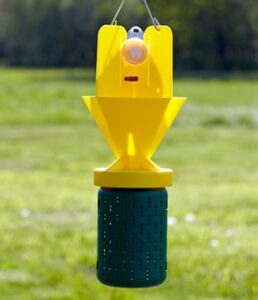
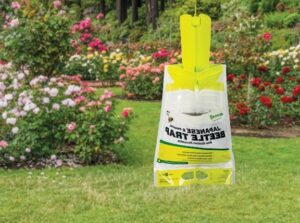
Figure 4: Example of commercially available Japanese beetle traps
More Resources:
The Japanese Beetle – Iowa State University Extension
Managing the Japanese Beetle: A Homeowners Handbook – USDA APHIS
Japanese Beetles in the Urban Landscape – University of Kentucky Entomology

